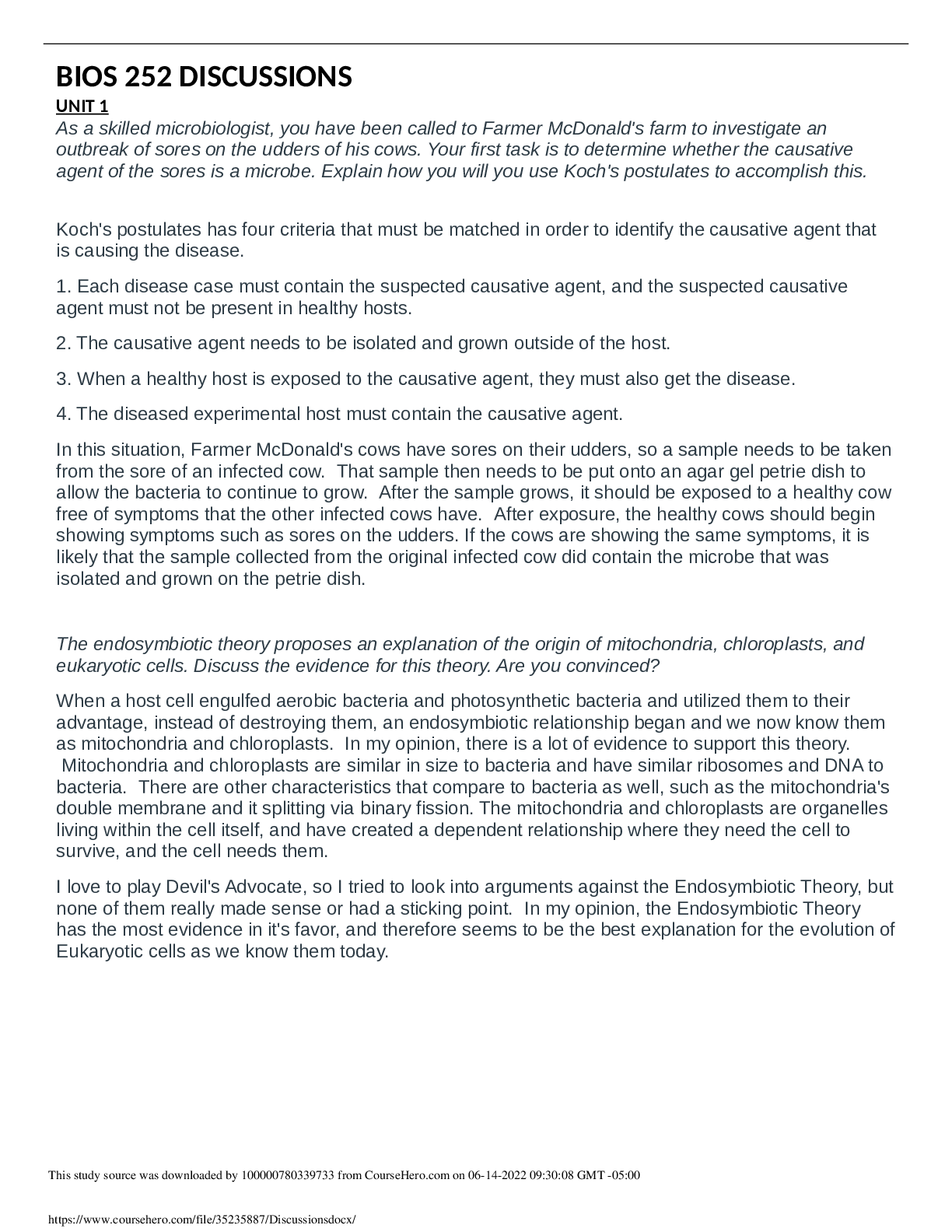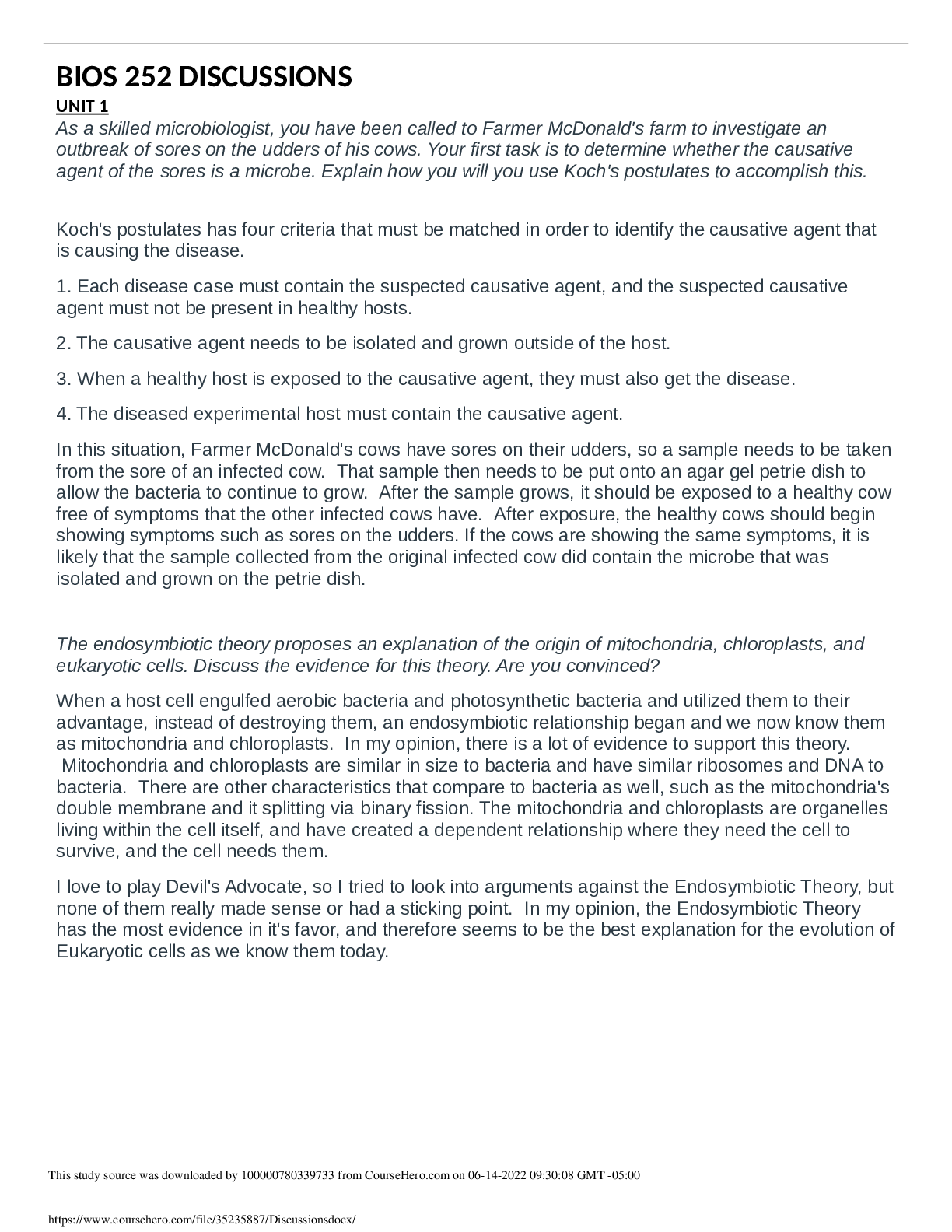As a skilled microbiologist, you have been called to Farmer McDonald's farm to investigate an
outbreak of sores on the udders of his cows. Your first task is to determine whether the causative
agent of the sores is a microbe. Explain how you will you use Koch's postulates to accomplish this.
Koch's postulates has four criteria that must be matched in order to identify the causative agent that
is causing the disease.
1. Each disease case must contain the suspected causative agent, and the suspected causative
agent must not be present in healthy hosts.
2. The causative agent needs to be isolated and grown outside of the host.
3. When a healthy host is exposed to the causative agent, they must also get the disease.
4. The diseased experimental host must contain the causative agent.
In this situation, Farmer McDonald's cows have sores on their udders, so a sample needs to be taken
from the sore of an infected cow. That sample then needs to be put onto an agar gel petrie dish to
allow the bacteria to continue to grow. After the sample grows, it should be exposed to a healthy cow
free of symptoms that the other infected cows have. After exposure, the healthy cows should begin
showing symptoms such as sores on the udders. If the cows are showing the same symptoms, it is
likely that the sample collected from the original infected cow did contain the microbe that was
isolated and grown on the petrie dish.
The endosymbiotic theory proposes an explanation of the origin of mitochondria, chloroplasts, and
eukaryotic cells. Discuss the evidence for this theory. Are you convinced?
When a host cell engulfed aerobic bacteria and photosynthetic bacteria and utilized them to their
advantage, instead of destroying them, an endosymbiotic relationship began and we now know them
as mitochondria and chloroplasts. In my opinion, there is a lot of evidence to support this theory.
Mitochondria and chloroplasts are similar in size to bacteria and have similar ribosomes and DNA to
bacteria. There are other characteristics that compare to bacteria as well, such as the mitochondria's
double membrane and it splitting via binary fission. The mitochondria and chloroplasts are organelles
living within the cell itself, and have created a dependent relationship where they need the cell to
survive, and the cell needs them.
I love to play Devil's Advocate, so I tried to look into arguments against the Endosymbiotic Theory, but
none of them really made sense or had a sticking point. In my opinion, the Endosymbiotic Theory
has the most evidence in it's favor, and therefore seems to be the best explanation for the evolution of
Eukaryotic cells as we know them today.
Read More


